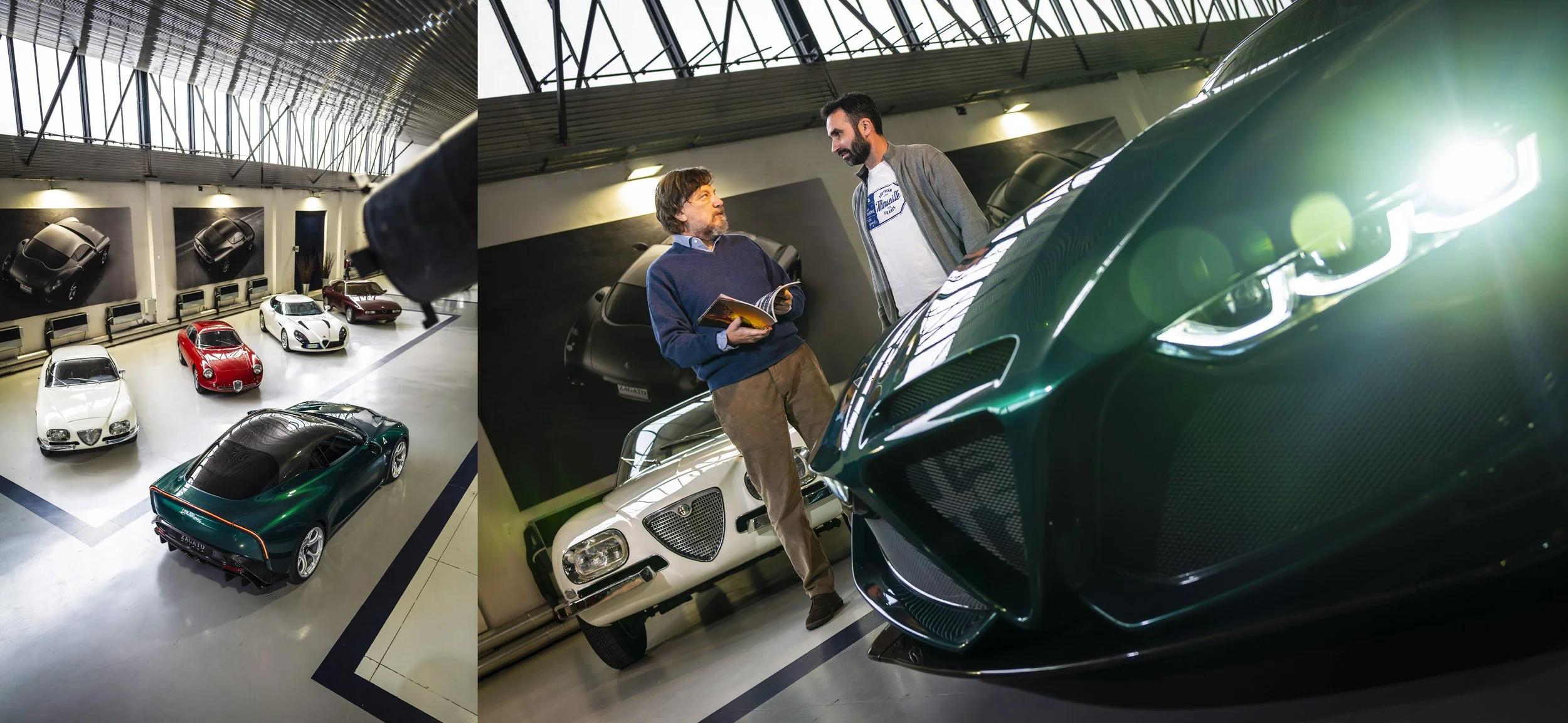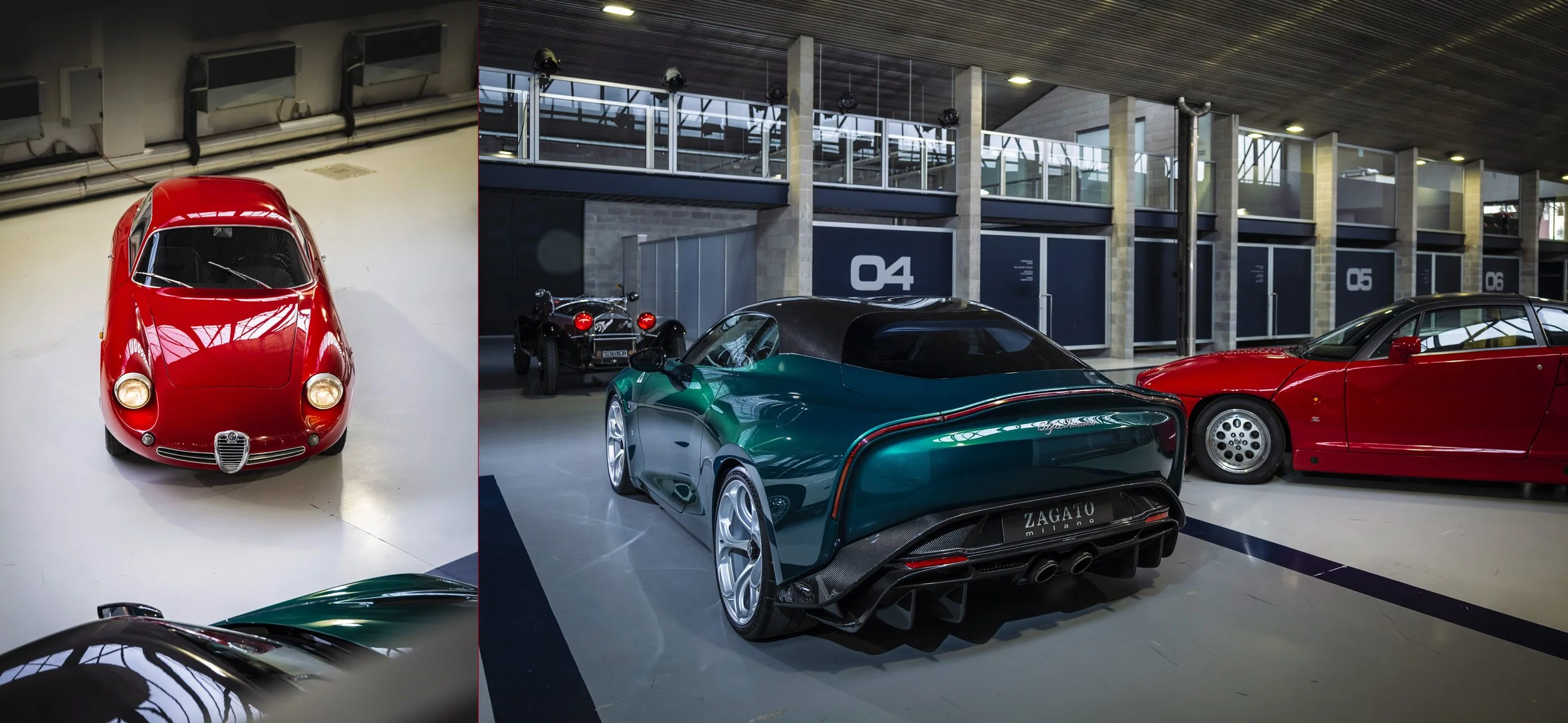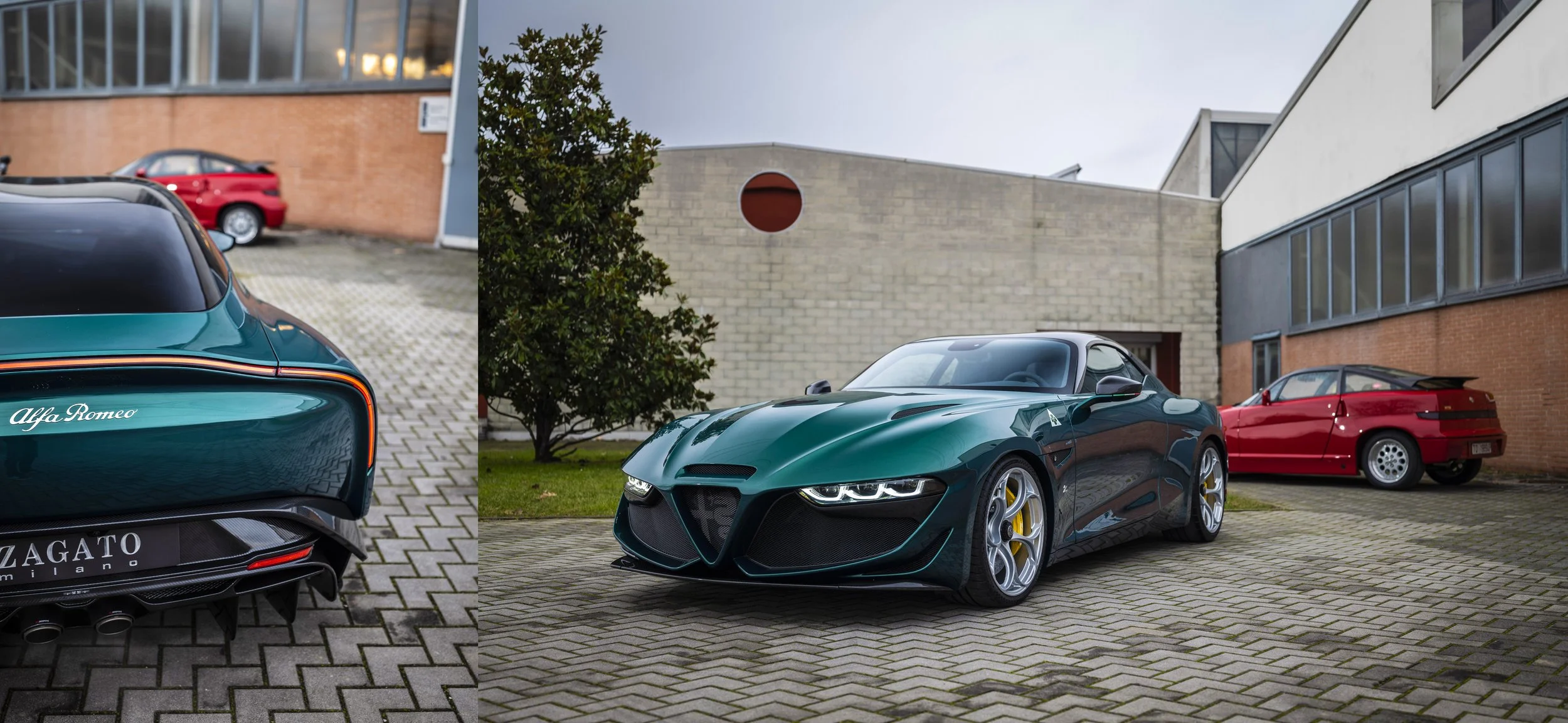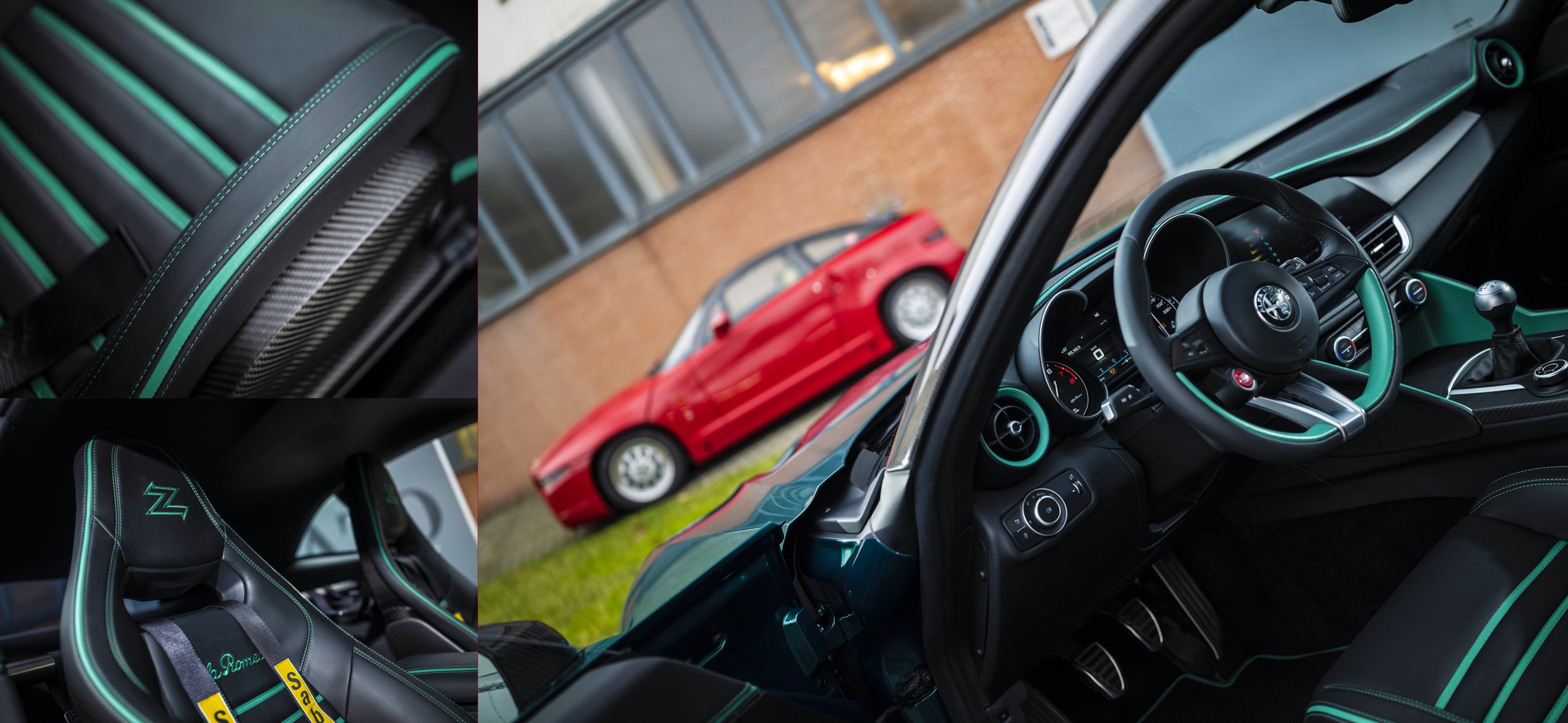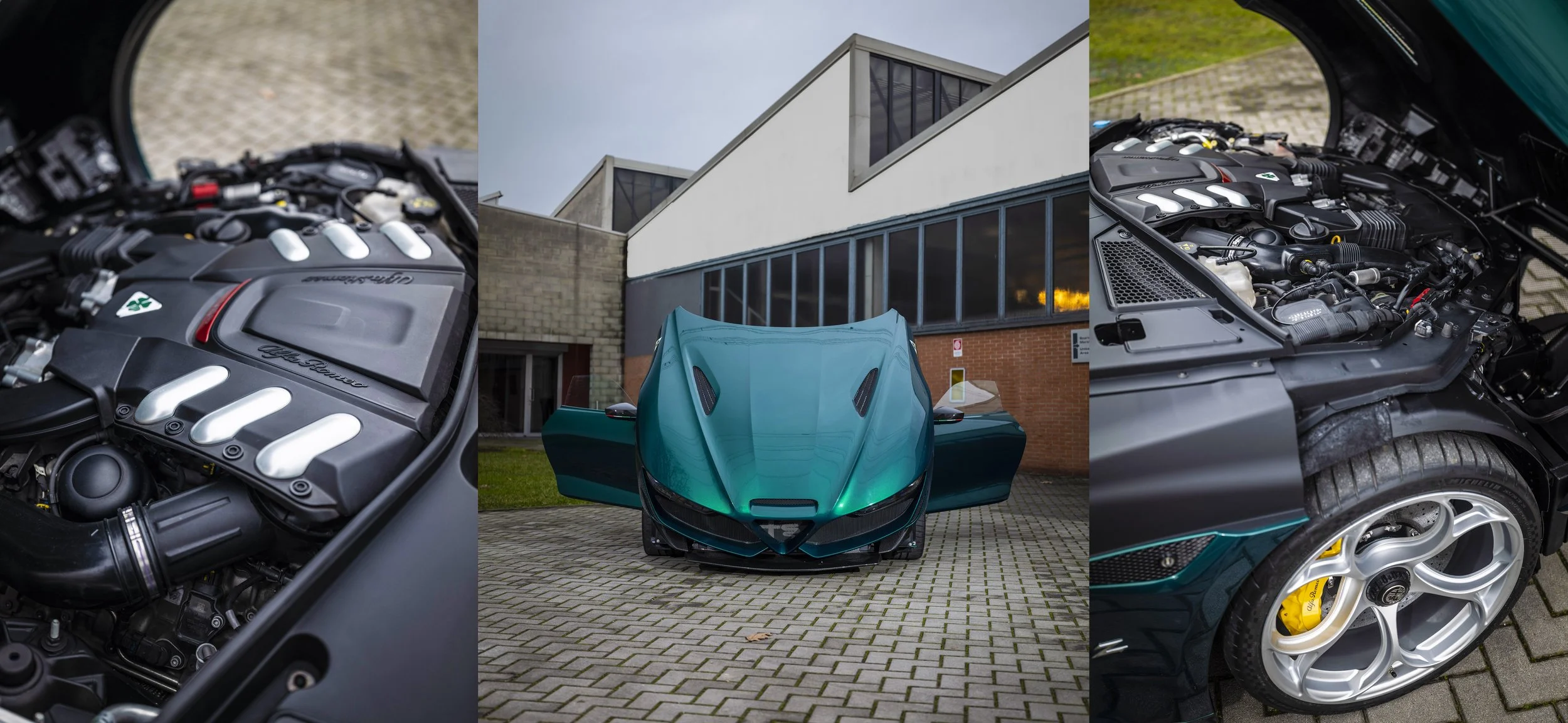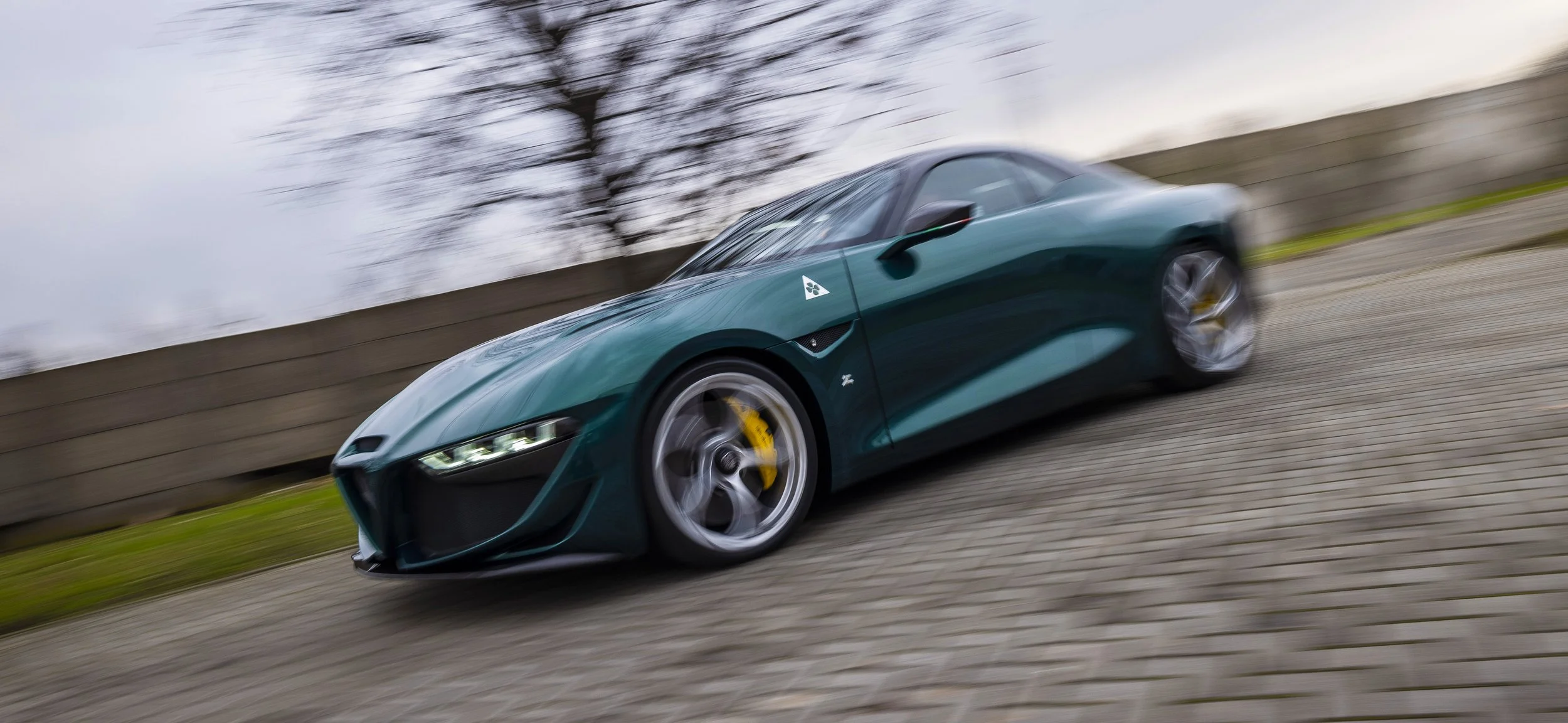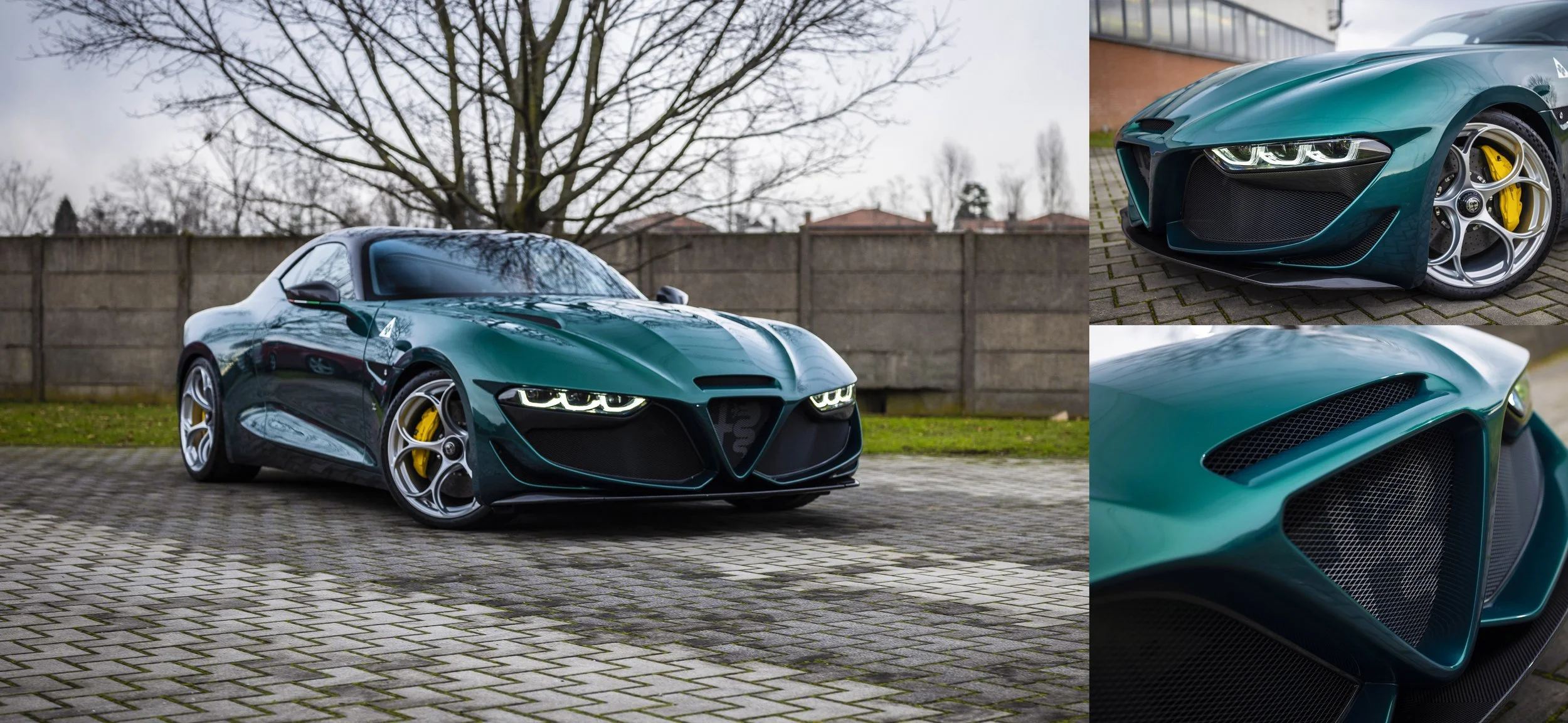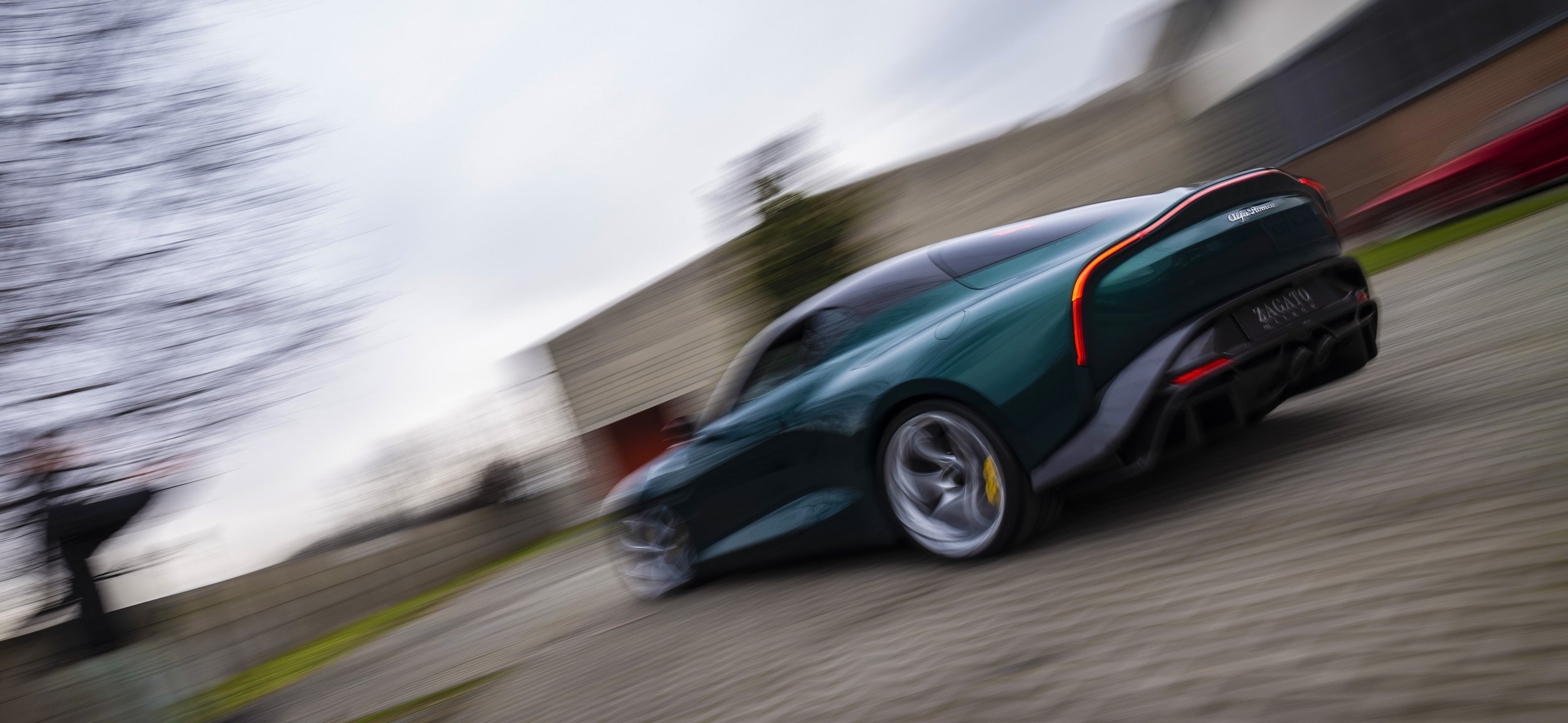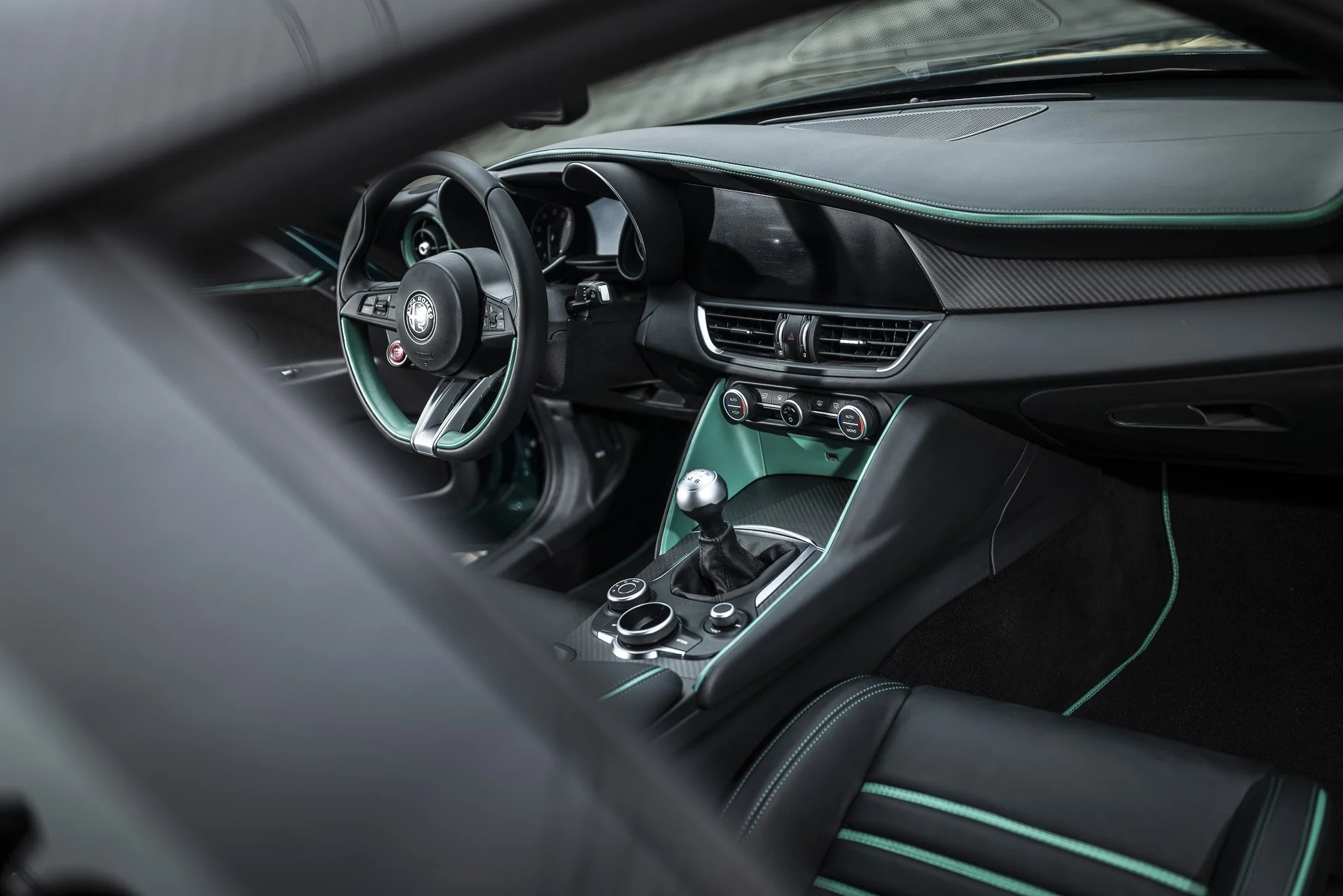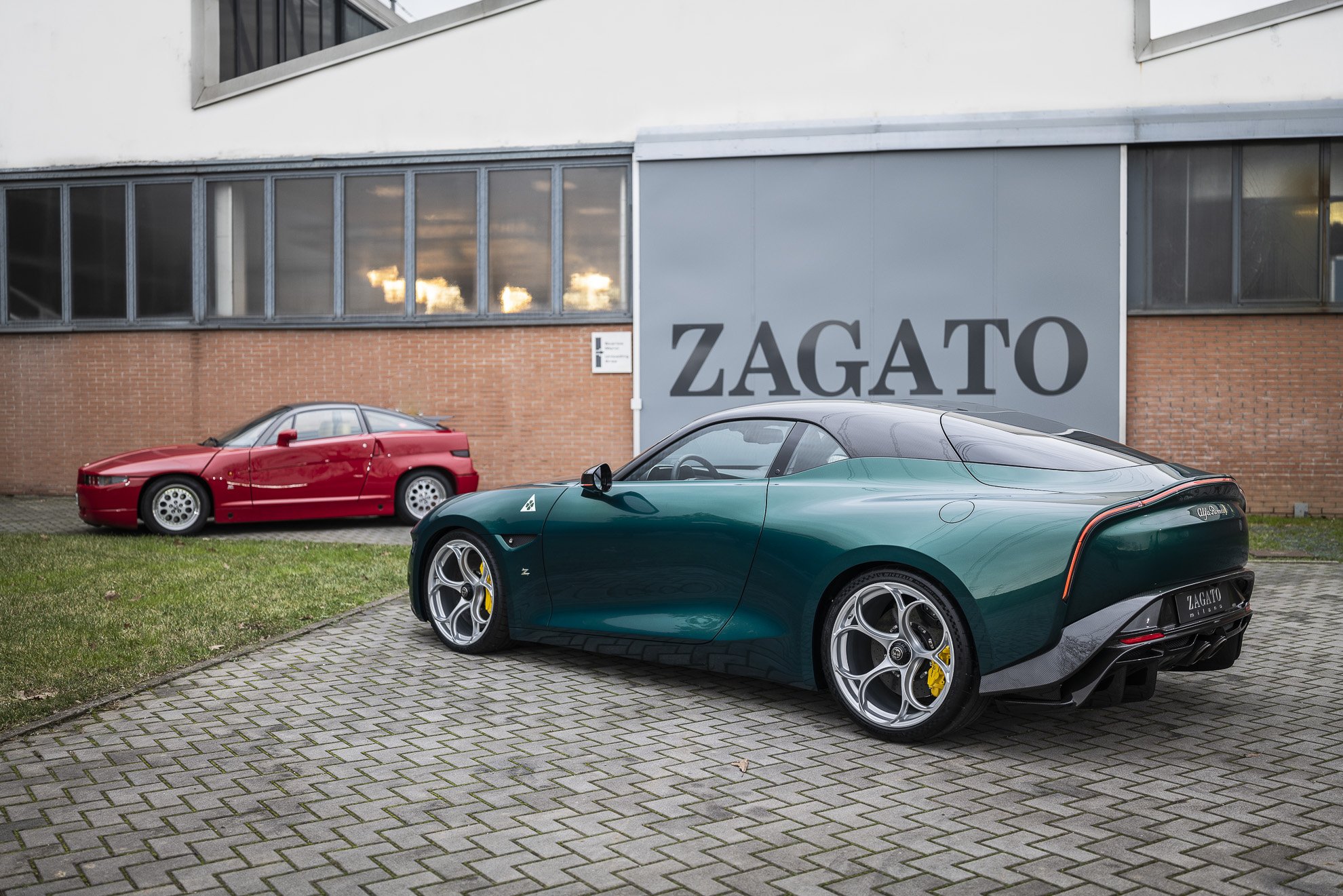BORN GIFTED
If you, like myself, are one of those people truly believing the world is a better and more beautiful place if there is an Alfa Gran Turismo in it, your wishes have finally come true. And then some!
You’d have to reconsider the burning sighs of desire for an Alfa Romeo coupe heard for the last 8 years from Alfisti all over the world, ever since Giulia Quadrifoglio was presented on that memorable scene, under Marchionne’s guidance and Andrea Bocelli’s glorious soundtrack. Indeed, with Giulia it may have debuted the Giorgio platform, proven by countless car magazine tests and industry awards received as “Best In Class”, and perhaps never in Alfa’s history a more suitable mechanical platform for an Alfa sports car “come Dio comanda” was made available… but a haute-couture coachbuilder like Zagato works on a different time frame. Consider that the atelier founded by Ugo Zagato “for the construction and repair of cars, planes and similar vehicles” in Milano started to function in 1919, just as a certain entrepreneur of Neapolitan origin called Nicola Romeo was taking over the Anonima Lombarda Fabbrica Automobili, giving it a name to make history - Alfa Romeo. The destinies of the two Milanese companies have taken different, but sometimes very close paths, and with every such occasion their DNA intertwined the results were spectacular. Be it for their vicinity, be it for their common interest - Ugo Zagato was one of the first automotive builders to use the principles of lightness and streamlining (intuited during his previous years spent working on aeroplanes); while Nicola Romeo knew his cars were made for winning races, he just needed someone to help him achieve that - the two companies started collaborating right from their incipiency. Initially on the G1 in 1921, Alfa’s first straight 6 cylinder powered model and also its most luxurious at the time, then on the Corsa models of the RL/RM type (forever stitching the Quadrifoglio sign in the automotive history books as the blessed sign of victory) culminating before the war with the Mille Miglia & Targa Florio winning 6Cs, or the first forays into the world of advanced aerodynamics with several 8C projects. Soon after the war the Gran Turismo era comes of age, beautifully executed with the 1900 SSZ and the 2600 SZ (also Alfa’s last model to sport an in-line 6 cylinder engine). This road going range of GTs is doubled by a racing line, represented by Giulietta SZ, Giulia TZ and the TZ2. It’s here in the all revealing and nothing forgiving racing experimentation and quest for speed that some of the emblematic Zagato styling cues, like the truncated tail or the double bubble roof, are discovered and applied. In the ‘70 the Junior Z might have been a small car, but of great significance: it showed how Zagato was able once again to make use of regular production mechanics but to come up with a totally different styling: the platform was that of the Spider and the mechanics were of the Junior GT, but the result couldn’t be more pleasantly striking. Just like the ES-30 (S.Z.), the influential 3 + 3 eyed “Mostro”; built in the ‘90 as the first Alfa to exclusively use just the computer aided design & manufacturing process, from initial sketch to final product in just 19 months. And in more recent times Alfa’s history beckoned once again, only for Zagato to aptly rise to the occasion: first with the TZ3 Corsa, built as a German collector’s one off homage for the House of the Biscione’s Centenario celebrations; and the TZ3 Stradale, built on the Chrysler Viper donor platform in 10 units (one example on display at the Zagato headquarters as an artist’s proof and 9 more as multiples of art, appreciated by collectors all over the world). It was a perfect symbiosis of American raw power dressed by the refined Italian styling at the time, a metaphor of Marchionne’s genius strike in acquiring the Chrysler company.
And here we are, one step up the evolutionary ladder, in front of another creation resulted from the entwinement of Alfa Romeo and Zagato’s DNA: the Giulia SWB. Continuing the SZ philosophy vein, sometimes overlapping with the TZ one, still searching what the original creations a century ago were looking for: nothing but essential beauty and high performance, achieved through aerodynamic efficiency and lightness. The car is built on the modular Giorgio platform, with both Giulia and Stelvio parts combined to achieve a wheelbase shorter with 12 cm than the one of the Giulia Quadrifoglio, and a 14 cm shorter rear overhang, resulting in an overall length just shy of 440 cm, compared to Giulia’s 465 cm. Due to the extensive use of carbon fibre in the body (of which the most visible is the sensual naked carbon double bubble roof) dressing these best in class mechanics makes for the overall mass of the car to be considerably lighter, even when compared to the Giulia GTAm. True to Ugo Zagato’s aviation mantra of achieving performances by adding lightness. This being also a culmination of Alfa mechanics, it has to come with a lot of power: the V6 Quadrifoglio engine and suspensions are upgraded to GTAm specs (540 hp) retaining as per the German collector’s old school petrolhead ad spirit the manual transmission of the early Quadrifoglio models. A match made not in heaven, but in the Zagato atelier on the old Via Arese (now Via Ugo Zagato 1) not far from the old premises of the Alfa factory, now hosting only the Museo Storico Alfa Romeo.
And if the Centro Stile is not so physically close anymore, it doesn’t mean that the relationship has gone any colder: in fact, the Giulia SWB is the result of a close collaboration teamwork between Zagato’s Norihiko Harada (for more than 20 years now in Italy) and the Centro Stile team, recently under Alejandro Mesonero’s leadership. The clear-cut headlights are those of the Tonale, and be it for their 3 + 3 theme, be it for their low positioning, they seem like a perfect fit, designed specifically for this car. The protruding scudetto is also reminiscent of the S.Z. in the way it’s incorporated in the long bonnet, only this time the entire frontal part, grilles, scudetto and headlights are lifting with the bonnet in a very spectacular, Transformer like fashion, leaving naked almost half of the car’s length and the glorious Quadrifoglio engine in plain view to examine. Few other current supercars are displaying this arresting trick of exhibition, and the one other car that comes to mind from Alfa’s recent history with the same revealing feature is the 8C Competizione prototype. Knowing the 8C prototype (presented 20 years ago at the IAA in Frankfurt) was built in the era of closest collaboration between the Centro Stile design studio in Arese and Zagato’s workshop in Rho, one may suspect the latter’s hand might have been involved, even if the final product didn’t bear its signature. The doors of the Giulia SWB open up at a push of a small button; with no visible handles interrupting the sideline, revealing the familiar Giulia interior, with its visually pleasant integrated infotainment system. The carbon seats have beer upholstered in black leather with green inserts matching the green paintwork, and so are the door panels and the upper dash. Moving to the back side, perhaps the most surprising part of the car considering the current Alfa design language, but so topically Zagato: the Kamm Tail has a sort of roundness to it, as seen on the TZ3s, and the thin rear bar of light running the entire contour is a clear recall to the original clear cut of the 2600 SZ. This thin red light is perfectly integrated, while the general assembly and build quality, with millimetric panel gaps, seems more characteristic of a laser guided robotic assembly than of a traditional handmade process - a modern take on Enzo Ferrari’s famous esteemed aknowledgement: “all’Alfa sanno fare i guanti alle mosche”. Moving back a few steps and admiring it from a distance the Giulia SWB looks like a nicely sculptured marble work of art. Its deep, dark green colour has blue-ish, almost turquoise finishes. It’s January and it’s cold, but it feels so Mediterranean!
Judging it from a historical standpoint, Zagato’s Giulia SWB as a one-off is a sublime tribute, marking what probably is the longest and most significant cooperation between two separate automotive brands in the entire automotive history. Another step in this ever evolving double helix made of Alfa and Zagato DNA. But we’re living for the present and we’d very much like to see the Giulia SWB not as a disparate genome, but as a genetic occurrence worthy of being replicated in a new line of sports cars. Alfa Romeo, your move!
Photography by Luca Danilo Orsi.


